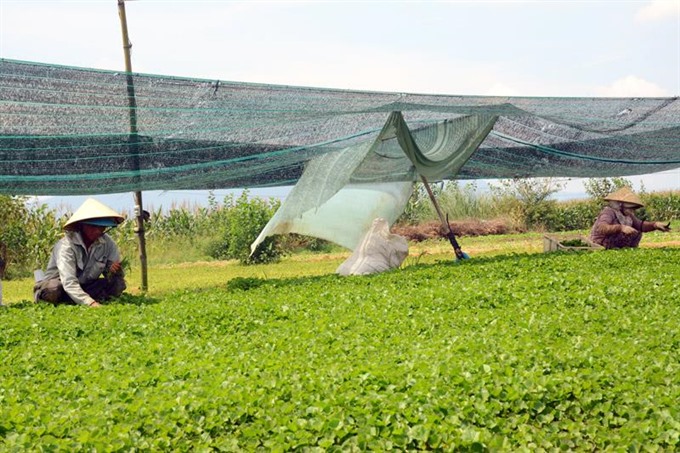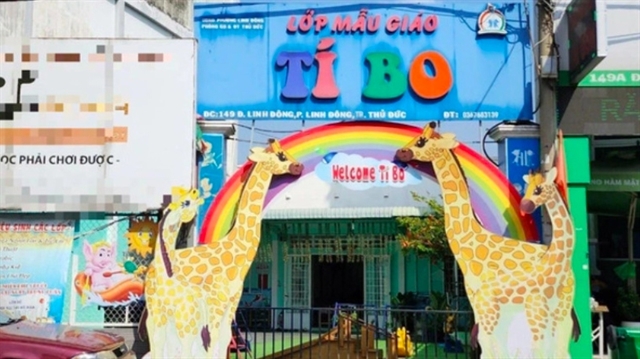.jpg) Society
Society

He repaired bicycles, bought vegetables at the wholesale market and sold them in smaller markets, and did all kinds of jobs to make ends meet.
 |
| Hà Ngọc Phi, from Điện Minh Commune in the central province of Quảng Nam’s Điện Bàn Town tends to his rau má (Asiatic or Indian pennywort) garden. His family earns up to VNĐ1 billion (US$44,000) a year from this plant. — Photo vietnamnet.vn |
QUẢNG NAM — He repaired motorbikes, bought vegetables at the wholesale market and sold them in smaller markets, and did all kinds of jobs to make ends meet.
But all the hard work that Hà Ngọc Phi put in was never enough to earn his family a decent income.
One day, as he drove his motorbike along the Thu Bồn River in Điện Minh Commune, Quảng Nam Province’s Điện Bàn Town, looking at all the wild growth on the roadside, including rau má (Asiatic or Indian pennywort), a thought struck him.
Since it is common knowledge in the country that rau má is very healthy herb with medicinal properties, used to treat a variety of ailments like jaundice, fever, nosebleed, minor wounds and even burns, not to mention improving lactation, why not cultivate it?
Although it grew wild, Phi had noticed that rau má always fetched higher prices than many other herbs in the market.
Phi discussed his thoughts with his wife and decided to hire land to grow this herb.
“At first, seeing my wife and I pull up the pennywort in the wild and grow them in my garden, people thought we were daft and told us so.
“They told us that there was no need to grow the plant, we should just pick them up in the wild. It would help save the money for renting the land and paying workers,” Phi recalled.
But Phi and his wife went ahead with their plan and worked hard on their land, but they were still surprised that in just three months, they could harvest over 4000kg of the herb.
At the market price of VNĐ25,000 (US$1.1) per kilo, they earned more than VNĐ100 (US$4,400) million in early 2012. It was around three times higher than what they would have got with other vegetables, Phi said. Encouraged by their initial success, Phi and his wife decided to expand the cultivation area to 4,000sq.m.
Today, five years later, thanks to the stable output and contracts signed with supermarkets and markets in Đà Nẵng and Quảng Nam, he supplies 200 kilos of rau má everyday. At an average price of VNĐ25,000 per kilogramme, he got monthly income of VNĐ150 million ($6.600) from cultivating rau má . After deducting all the expense, his family earns VNĐ1 billion ($44,000) in profit a year.
While acknowledging that his success has motivated other farmers to follow suit, Phi cautioned that he has faced a lot of challenges over the past six years.
“Seeing rau má grow in the wild, I thought that it would be very easy to grow and take care of it. However, there were many instances that they did not grow well, and productivity was low,” he told the Nông Nghiệp (Agriculture) newspaper.
So he searched information on the Internet and read up as much as he could from newspapers, books and other sources, to gain an idea of what could be done to improve his cultivation method.
Phi said the herb is strong and susceptible to fewer diseases caused by pests. “After harvesting, if we continue to water and provide fertilisers, it will give the next harvest a month later and can be exploited for five to ten years.”
The alluvial land that Phi’s family hired would be inundated during the flooding season, so it was suitable for planting this herb.
As the first person to cultivate this herb in his locality, he has not hesitated to help others who have sought it.
“Phi’s production model of rau má not only brings high economic value but also helps create jobs for local workers with an average monthly income of VNĐ4.5 million ($198),” said Trần Bương, chairman of Điện Minh Commune’s People’s Committee
Phi said that to ensure that the herb would be safe, it was necessary to avoid chemical fertilisers and pesticide so he used a natural pesticide, a mixture of chilli, ginger and garlic to control diseases.
This might be a reason why his produce is favoured by customers, he added.
Phi is also considering registering a safe vegetables label for large production areas including the family’ garden and some surrounding households.
"When the trademark is registered, the process of production from farming, harvesting, processing, packaging and labeling must be strictly controlled. It will be hard, but in order to survive in the long term and enhance our competitiveness, we have to focus on brand building," Phi told online newspaper Vietnamnet.
He said his wish for the future was to have more land to provide more safe vegetables to the market. — VNS



.jpg)





.jpg)